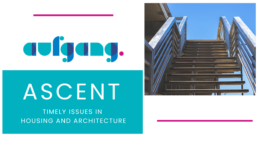
Should New York Become a Sponge City?
Flooding from unprecedented torrential rainstorms in New York City that caused drowning deaths in outer borough basement apartments and sent tons of water cascading down subway entrance steps may have an innovative solution adapted from China.
Counterintuitively, rather than channeling storm water away from cities, China is converting some urban areas into “sponge cities,” designed to mitigate storm flooding by using natural areas such as grassy wetlands, overflow ponds and permeable riverside paths to absorb water.
“Traditional urban planning called for complex networks of drainage channels to move water away from city centers as quickly as possible. Sponge cities use natural features to absorb water,” said Shiva Ghomi, Director of Planning and Community Development at Aufgang. In China, flood mitigation is approached with the goal of improving the landscape’s ability to absorb water.

“While more than 70% of New York City is covered by surfaces that aren’t absorbent, making it vulnerable to severe flooding, especially during hurricanes, this challenge can be offset with creative techniques,” she said. Developers are increasingly asking Aufgang to recommend strategies to mitigate flooding, which can include:
- Incorporating rain gardens, green roofs and tree pits in building designs. These provide multiple benefits beyond water management. These spaces can be attractively landscaped into gathering areas for multifamily buildings. The potential exists for planting shade trees and creating urban farms which reduce the urban heat island effect.
- Allocating space for wetlands near flood-prone areas would help manage stormwater in low lying flood-prone communities in the City’s outer boroughs.
- In areas where landscaping is not feasible, permeable pavement could be utilized. This innovative material allows water to pass down into the ground below, unlike traditional asphalt and concrete.
Sponge City and other flood mitigation strategies are needed to manage expected rises in sea levels. The NYC Stormwater Flood Map displays current flood risks and projects them through future decades. If not addressed now, Ghomi warns, they will have a profound impact on New Yorkers’ safety and quality of life

